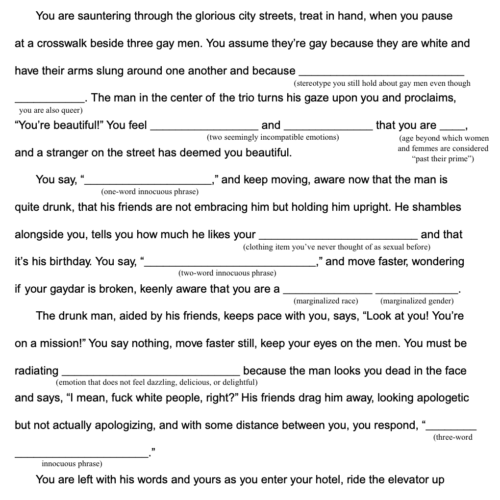I break stuff.
Chronically. I don’t know why.
For several years my wife, Leslie, kept a delicate heirloom teacup made of fragile porcelain on her nightstand. One evening, while getting ready for bedtime, I tossed an extra pillow off the bed. As it left my hands, it brushed the teacup and sent it crashing to the floor. The handle was severed from the cup, which shattered into three pieces.
Leslie treasured a striking blue and orange serving platter that her mother had bought in Germany when Leslie’s dad was stationed there. She hung it on her office wall, about a foot to the right of a window. Noting that the blinds were frozen in place one morning, I yanked them down hard to free them from the roller. They came down all right—the roller even burst from its brace—and in doing so knocked the platter from the wall and onto the floor. It broke into several shards.
I’ve also destroyed an elegant square white platter and an impressively large cobalt blue platter that we used when entertaining guests. I’ve smashed or chipped many a plate and bowl when placing them in the dishwasher or putting them in the cupboard.
Leslie, however, does not break stuff. A few years ago, she did break her ring finger by accidentally whacking it against the back door of our house. But ordinarily, she’s the one who fixes the stuff that I break, helps me sweep up the pieces, and commiserates when others break stuff.
I mean no harm, I swear. So why do I break stuff?
- Because I’m careless (the teacup).
- Because I’m too eager to help out (the blue and orange platter).
- Because I’m hasty (those other dishes).
- Because I inherited my mother’s clumsiness gene.
My mom broke stuff.
My mother, Lois, was a famous klutz. She was knock-kneed, which made her prone to falling. Even in her younger years, she would frequently stumble and trip, although she never broke a leg. A trip to the supermarket with her was an adventure. I would cringe as she’d casually knock down racks or shelved items while chattering, barely noticing that they’d tumbled (and never ceasing to talk). Late in life, she got severe arthritis, which rendered walking even more difficult (and eventually impossible) and made her more of a menace to anything breakable.
But her hands were the worst offenders.
A devout Christian who despised booze and boozers, during visits with Leslie and me, Mom would invariably break at least one wine glass, usually while it contained some of that deplorable beverage. Red wine, especially, seemed to need to be splashed on the table or rug, and Lois was ready to oblige. Was this an unsubtle criticism of our lifestyle or just a symptom of her notorious clumsiness?
Lois had small and very busy hands: while conversing, she would break toothpicks into ever-tinier pieces and line them up. She continued to do this, and to paint her nails in a fresh hue, even after her swollen knuckles had come to resemble a bag of ginger roots. Mom eventually had two knee replacements, but there was no surgery for the gnarled knuckles that weakened her grip and made her that much more prone to dropping and breaking stuff. But she broke things long before arthritis came along.
One summer afternoon, when my sister, Nancy, and I were kids, Mom caught her wedding ring in the handle of our back door. The door swung open widely, leaving her to dangle from the porch by her left hand. “Go get Willie!” she shouted. Nancy and I ran to fetch our next-door neighbor, who said, “Woman, what have you done?” before managing to pull her hand free and prevent a dislocated shoulder. But the ring was still attached. Her finger had swollen grotesquely and turned purple-black by the time Dr. Ralph, smelling of whiskey, cut it from her finger. She broke the door and her ring.
Why did Lois break stuff?
- Because she was always in a hurry.
- Because she, like me, had poor proprioception, which means we don’t always know where our bodies are located in space.
- Because she was severely nearsighted. (As am I.)
- Because she had tiny hands and terrible fine motor skills. Yet she had elegant handwriting, unlike mine, which is indecipherable to most people, sometimes including myself.
Or maybe I break stuff
because my dad broke stuff.
My father, Narven, grew up in North Carolina. He had lived in Montana for only a short time when, at age 21, he accidentally killed a man in a hunting accident. An elderly miner who was one of the first settlers in the region, the man was stupidly wearing a buckskin coat during deer hunting season. My mother, pregnant with me, waited in their truck. Dad claimed later that he had shouted down the ravine before firing, but the old man, whose name was Harry Howard, was deaf. After shooting him, Dad carried Howard up the ridge to the road as the old guy cursed him out: “You son of a bitch, you shot me!” Howard died because the bullet lodged in his spine, breaking his back and ripping apart his lungs. Dad was tried for manslaughter. Result: a hung jury. He was legally innocent but tormented by guilt for decades. Something had broken in him.
When my sister and I were pre-teens, Dad came home after a day at the golf course even more blitzed and belligerent than usual. Slurring his words, he called my mother a filthy name. Although he frequently abused her verbally, he had never physically harmed her. But this time, he did, forcefully shoving her up against the kitchen wall. Nancy and I watched as Mom phoned Dad’s best friend, a local physician named Jack (not the one who had fixed her finger), begging him to come over and calm Dad down. But Jack had been drinking all day at the golf course too, and when he arrived, he was in no condition to calm anyone. They argued loudly. Finally, Jack shouted, “Narv, you’re scaring your wife and kids! Now knock it off!” “You can’t come to my house and tell me what to do!” Dad yelled, raising his fist. Jack hauled off and punched Dad in the jaw, but Dad didn’t fall. Instead, he turned and, suddenly sounding sober, said, “I need an equalizer.” Then he picked up a dining room chair and slammed it into Jack’s left shoulder. He broke Jack’s arm. Dad retreated to the basement with a knife, threatening to kill himself. Mom talked him out of it. He and Jack remained friends.
When I was in college, Dad started an affair with a younger woman. When Mom found out, she pleaded with him to break it off, but he refused. Instead, on their 24th anniversary, he filed for divorce. He had broken many promises along the way—to limit his drinking, to talk less about sex—but this time, he broke his wedding vows.
Dad broke stuff
- Because he was young and careless.
- Because he was an alcoholic.
- Because he was desperately unhappy.
- Because he had a fragile ego and always needed to prove himself.
I am not much of a drinker. Do I break things because I’m passive-aggressive and hateful? Because I’m insecure? I don’t think so. But I do break stuff. That could be why
my son breaks stuff.
When Cameron, autistic and barely verbal, was a child, he couldn’t sit still for two minutes. He would bounce for hours and hours on a small circular trampoline that sat in front of our picture window. I should write “trampolines” because he broke six of them: his constant bouncing would eventually rupture the springs holding the fabric to the frame.
He bounced elsewhere, too. For example, on his bed. He would rock and throw himself back on his mattress repeatedly, usually while squealing or howling in an ear-splitting falsetto. He ruined four sets of box springs, six mattresses, and several chairs by rocking and bouncing. After he broke the legs of our dining room chairs, we bought a PVC glider chair so that he could rock to his heart’s content. He broke it too. I heavily duct-taped it together. It lasted another year, and then he broke it again.
In his early teens, Cam began to shred his clothing. He would start by pulling out a single thread from the bottom of a shirt or by yanking free the elastic fibers of his underwear waistband. Then, fiber by fiber, he would unravel the item until it was rendered into confetti. We eventually discovered that he could satisfy this craving by taking apart flat white shoelaces. Now, instead of tearing his clothing, he rips up shoestrings. The filaments litter the floor, tangible evidence of his talent for breaking stuff.
At nineteen, exuberant Cam put his hand through the picture window. We spent all morning at the ER, where the pleasant female doctor stitched up his wrist and sent us home. Five minutes after returning home, Cam snapped the stitches and pulled them out of his wrist. “Why did you do that?” I shouted at him in a fury. “Have fun!” he replied. “You can’t have fun because now we have to go back to the hospital!” “He could die,” he explained. Back at the same ER, a different doctor decided that sewing in new stitches would be futile. My son left the hospital with a gaping hole in his wrist that revealed the bloody tissue beneath. It healed up in six weeks. We fixed the broken window.
My son’s boundless energy and resistance to correction has, in my less admirable moments, made me break stuff, such as, oh, I don’t know, let’s say the door between the living room and the kitchen. Who knew that a strong kick would knock a door off its hinges? Or that you can pulverize a Wiffle ball bat by whacking it repeatedly against the trunk of a maple tree?
Cam breaks stuff
- Because he needs to rock and bounce to center himself.
- Because he is not able to play games.
- Because he acts on impulse and doesn’t consider consequences.
- Because he wants his parents’ attention. And he gets it.
- Because his dad breaks stuff.
When I was young, I broke stuff.
As a kid, I broke my glasses frequently. I busted them so often that my parents got tired of paying to get them fixed, so during my fifth- and sixth-grade years, I wore glasses held together with black electrical tape. They were easier to break that way.
When I was carless in college, a friend, the drummer in my rock band, lent me his ten-speed bicycle. I was heading home on his bike from a rehearsal one afternoon when an elderly driver made a left turn and rammed head-on into me. As I flew through the air, time stopped. “I guess this is how it feels to die,” I thought. I slammed into the old man’s windshield (it was safety glass, thank heavens) butt-first, wrinkling it but not breaking through, then bounced down onto the pavement. The old fellow got out of the car shaking. I was afraid he would collapse right there. “Are you all right?” I asked him. “Are you all right?!!” he responded. I was dazed but unbroken, except for torn shorts and ugly black smudges on my legs and back. Oh yes, and the chunk of flesh the bike frame had gouged out of my right leg, which was bleeding onto the pavement. The bicycle, however, was crumpled up like Wile E. Coyote after one of his failed attempts to snare the Roadrunner. As I sat on the curb, feeling dizzy and trying to get my bearings, I looked up to see my friend, the bike’s owner, passing in his van. He braked, stared hard at me and at the scene, a horrified look on his face. “Oh, God!, oh no!” he said. “My bike!”
Home from college for the holidays, I partied hard at a friend’s house a few miles from town. After several hours of drinking and smoking dope, I left with my buddy Paul in his prized golden Dodge pickup; a girl we knew hitched a ride with us. It had snowed that evening over a road packed with ice, and as Paul tried to stop at an intersection, the pickup skidded hard to the right without slowing. “Hang on!” he yelled. We rammed a telephone pole and came to a dead stop. Everyone seemed okay, but the truck was in the ditch, so we hoofed it the half-mile back to the party house. By the time we got there, I felt faint and couldn’t stop shivering. “Man, you look like a ghost,” someone said as I passed out. Luckily, one guy there knew how to treat shock and hypothermia and covered me with every coat in the house until my shivering abated. The next morning, the mirror revealed a black and purple shiner covering the left side of my face. Apparently, I had smacked my head against the dashboard, but in my inebriated state, I’d barely felt it. I had broken my nose.
Why did I break stuff?
- Because I was too broke to buy a car.
- Because I had a weird death wish that expressed itself through negligence and foolish decisions?
- Because I couldn’t say no to friends who persuaded me to do stupid things. Or maybe I broke stuff because
my dad broke stuff.
Narv had a stroke in his late sixties, which rendered useless the last two fingers on his left hand and caused him to drag his left leg when walking. His hand and leg weren’t broken, but they might as well have been. Yet even after a stroke and three marriages—and three divorces—he continued his tomcatting ways. At age 77, he found a woman who liked him and tolerated his boorish behavior. “She’s nice but kind of ugly,” he confided to me. “I have to load up on drugs to get a hard-on. I call her my Levitra girlfriend.” Not to her face, I’m fairly sure (but knowing Narv, I can’t be positive).
On a July day in 2009, he decided to drive the 160 miles from our hometown to visit her in Spokane. About fifty miles from home, his car crossed the center line and collided head-on with another car. The elderly woman driving the other auto had a severe head injury, and Dad lay in a coma for fifteen days. The doctors said they couldn’t believe he had survived and told us that the odds of his recovery were less than 50%. Three days after the wreck, the woman’s adult children showed up at the ICU, demanding to be let into Dad’s room. Were they planning to kill him? Sue him? Their family was broken apart; they couldn’t think straight. The hospital moved Dad to a different room and placed a fake name on his door. Two days later, the woman died without regaining consciousness. We never saw or heard from her children again. My dad, who had driven logging trucks for thirty years without a single crash, had, on a pleasant summer day, while driving an ordinary car, caused a fatal accident.
I spoke to him on the phone a day or so after he woke up. “You’re a miracle man,” I enthused. “But what shitty luck!” Long silence. Then he spoke. “It’s just life,” he said. He was released from the hospital after a few weeks but was never the same. The accident had broken his brain and spirit. He died the next May.
He didn’t intentionally crash his car, but it was totaled anyway. Likewise, as we know,
my mom broke stuff.
As an elderly driver with poor vision and scattered attention, Lois had frequent fender benders. Every deer in Lincoln County seemed to gravitate toward her car. I imagined their secret conferences: “We’ve heard that Lois is driving to Kalispell tomorrow. Prepare to track her and dash in front of her vehicle!” Yet, she dismissed these minor accidents with a chuckle. In fact, she proudly told me that the body shop owner had given her a discount on her latest repair “because I’m such a regular customer.”
Lois kept working until the age of 85, but soon after that, the woman renowned for her incessant yakking lost the ability to speak. As dementia set in, she began to wander onto the road at night. After several months in a care center, she died at age 89. I came home for the funeral but did not want to see her in the coffin. Nevertheless, during “visitation” hours, I had to be present when relatives and friends stopped by to view her body. As I prepared to leave the funeral home, I swallowed and walked over to the coffin.
She lay there, her face heavily made up, her mouth looking pinched. For a moment, I gazed at her lifeless body without weeping. This isn’t really her, I told myself. Then my eyes fell on her hands. Those tiny hands with their gnarled knuckles were primly folded at her waist. They were quiet, quieter than I had ever seen them. The sight of those hands broke me up.
Those little hands.





